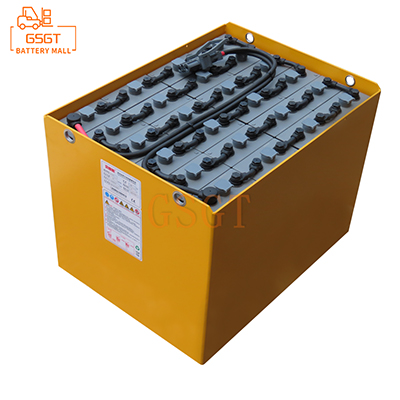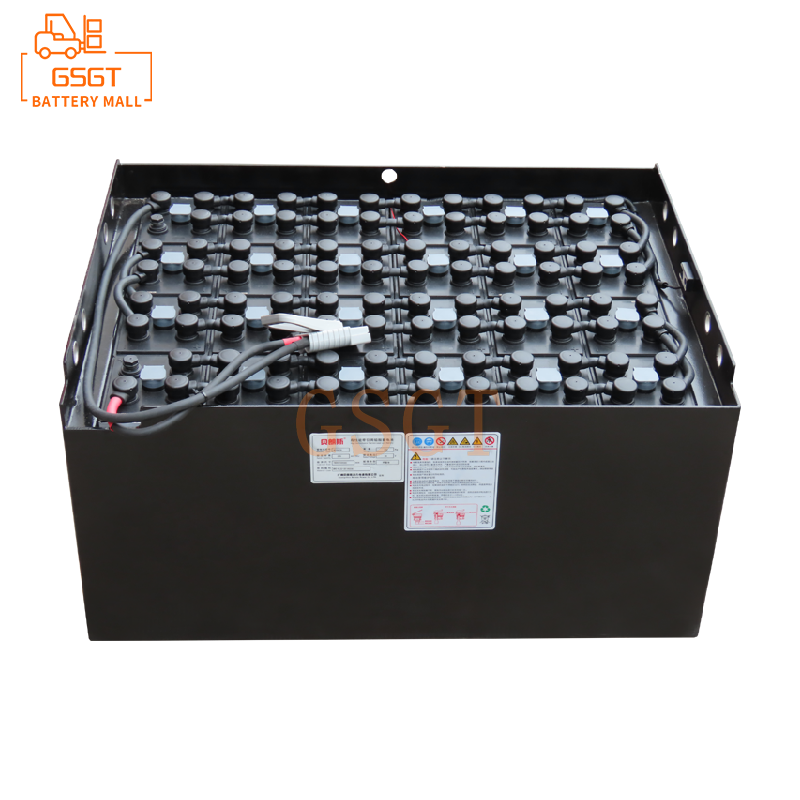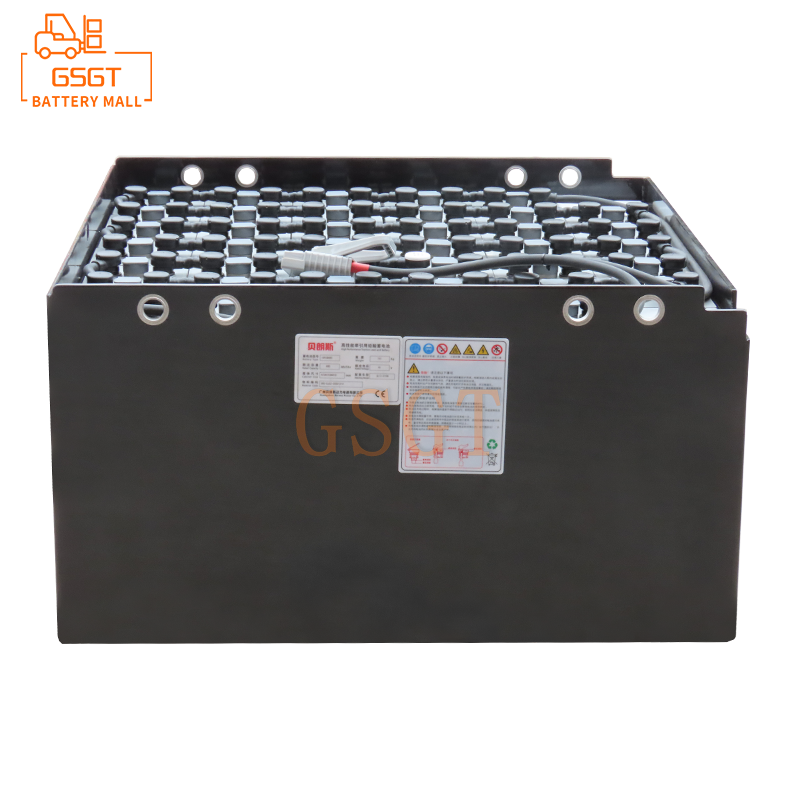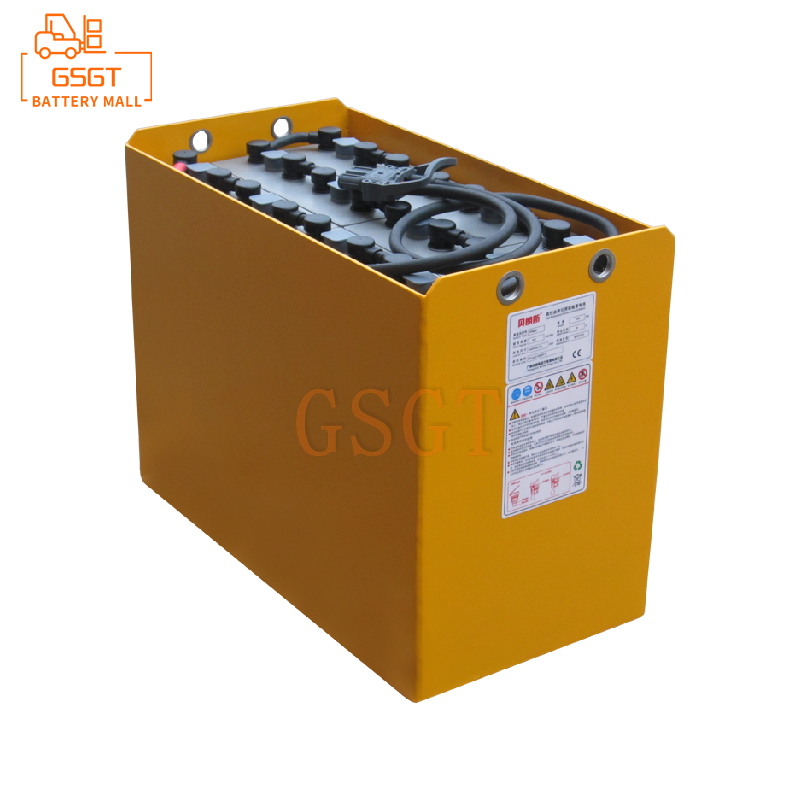Time:2025-06-12 11:19:45
Browse:600
Understand the characteristics of lead-acid batteries
Lead-acid batteries are mainly classified into flat plate type and tube type based on the structure of their plates. The flat plate positive electrode plate has a grid-like honeycomb structure. It generates energy through the chemical reaction between lead and sulfuric acid. It has a strong tolerance for high charging rates, but a charging speed that is too fast will significantly shorten its service life. It is often used in small single-shift operation scenarios. The tubular type provides a larger surface area for the lead in the positive electrode plate to interact with the acidic electrolyte. Compared with the same model of flat battery, its capacity is about 15% higher and its charging acceptance efficiency is also slightly better.
The lifespan of lead-acid batteries is influenced by multiple factors, including battery quality, usage methods and frequency, charging process, charger quality, maintenance status, and application environment, etc. Under normal circumstances, most lead-acid batteries can achieve 1,500 charge and discharge cycles, corresponding to a service life of 3 to 4 years. Like some that are used very infrequently but well maintained, they can even be used for a longer time.
Standard lead-acid batteries have a relatively slow charging speed, with a charging efficiency typically around 75%. The heat generated during the charging process requires a long cooling time. At the same time, lead-acid batteries generally need to be replenished with water at least once every two weeks to make up for the loss of hydrogen during the charging process, and the replenishment operation must be carried out when the battery is fully charged.
Types and working principles of chargers
Power frequency charger
The power frequency charger is equipped with a transformer inside. It first reduces the voltage of alternating current through the transformer, and then converts the alternating current into direct current through the rectifier circuit, thereby charging the lead-acid battery. Its advantages lie in mature technology, relatively stable output voltage and current, and less damage to the battery. The disadvantages are that it is large in size, heavy in weight, relatively low in efficiency and slow in charging speed. For instance, in some forklift application scenarios where the charging speed is not highly demanded, stable charging effect is pursued, and battery life is emphasized, power frequency chargers are widely used.
High-frequency charger
The high-frequency charger employs high-frequency switching power supply technology. It first rectifies the input AC power into DC power, then converts the DC power into high-frequency AC power through a high-frequency inverter circuit. After being transformed by a high-frequency transformer, it is rectifies back into DC power to charge the battery. The advantages of this type of charger are its small size, light weight, fast charging speed and high efficiency. However, it has high requirements for battery adaptability. If the parameters are not set properly, it is easy to cause damage to the battery. In places such as logistics warehouses where forklifts are frequently used and there is an urgent need for rapid battery replenishment to improve operational efficiency, high-frequency chargers are more favored.
Key points for matching chargers with lead-acid batteries
Voltage matching
The rated voltage specifications of forklift lead-acid batteries are diverse, with common ones including 24V, 36V, 48V, etc. The output voltage of the charger must be precisely matched with the rated voltage of the battery. If the output voltage of the charger is higher than the rated voltage of the battery, it will cause the battery to be in an overcharged state, resulting in the water in the electrolyte being electrolyzed into hydrogen and oxygen and escaping, increasing the concentration of the electrolyte, accelerating the aging of the battery plates and shortening the battery life. In extreme cases, it may even lead to safety accidents. Conversely, if the output voltage of the charger is lower than the rated voltage of the battery, the battery will not be fully charged, resulting in insufficient power for the forklift during operation and a significant reduction in its driving range. For instance, a forklift with a rated voltage of 48V, if a charger with an output voltage of 36V is mistakenly used, no matter how long it is charged, the battery cannot reach a fully charged state. The forklift will be unable to operate due to insufficient power after working for a short time.
Current matching
The charging current has a significant impact on the charging effect and lifespan of lead-acid batteries. For lead-acid batteries, the ideal charging current design is usually 0.1C, and the charging current should not exceed 0.3C. If the output current of the charger is too large, it will cause the battery to heat up severely, accelerate the shedding of active substances on the battery plates, resulting in a decrease in battery capacity and a shortened lifespan. If the output current is too small, the charging time will be significantly prolonged. This not only reduces the efficiency of the forklift but also may cause sulfation of the battery plates due to prolonged low-current charging, which also affects the battery life.
Charging mode matching
The more ideal charging mode for lead-acid batteries is staged constant current charging, that is, a larger current is used at the beginning of charging to quickly replenish part of the battery's power. After charging for a certain period of time, reduce the current to prevent the battery from overheating and damage to the plates. At the end of charging, trickle charging with a smaller current is adopted to ensure that the battery is fully charged without overcharging. A high-quality charger should be equipped with multiple charging modes such as constant current, constant voltage and float charging to meet the needs of lead-acid batteries at different charging stages. During the constant current charging stage, the charger outputs a constant current to rapidly increase the battery capacity. During the constant voltage charging stage, as the battery power increases, the charging current gradually decreases to prevent overcharging. During the float charging stage, the battery power is maintained at a lower voltage to compensate for self-discharge losses and extend the battery's storage time.
The methods and steps for matching the charger
Clarify the parameters of the battery
Before matching the charger for the lead-acid battery of the forklift, it is essential to accurately grasp all the parameters of the battery. Carefully examine the labels on the battery casing to obtain information such as rated voltage and capacity. At the same time, understand the type of battery, whether it is flat plate type or tube type, because different types of batteries have differences in charging characteristics. If complete information cannot be obtained from the battery label, you can refer to the forklift's user manual or contact the battery manufacturer for consultation.
Select the specification of the charger
Based on the calculated voltage and current matching requirements, select a charger that is compatible with them. Give priority to choosing an intelligent charger that has multiple charging modes and can automatically adjust charging parameters according to the battery status. Check the product manual of the charger to confirm that its key parameters such as the output voltage range and maximum output current are correctly matched with the battery. For high-voltage batteries above 48V, chargers equipped with fans and other heat dissipation devices should be selected to ensure that the heat generated during the charging process can be dissipated in a timely manner and avoid overheating affecting the performance of the charger and the battery.
The hazards of improper matching of chargers and batteries
Hazards to the storage battery
If the output voltage of the charger is too high, it will cause the battery to overcharge, resulting in water loss of the electrolyte, corrosion of the plates, and shedding of active substances, leading to a rapid decline in battery capacity and a significant shortening of its lifespan. Long-term overcharging may also cause the battery casing to expand and crack, leading to electrolyte leakage, environmental pollution and even safety accidents. If the output voltage of the charger is too low, the battery cannot be fully charged. The plates will be in a state of undercharging for a long time, which will accelerate the sulfation of the plates and also reduce the battery capacity and service life. Excessive charging current causes severe battery heating, accelerates internal chemical reactions and shortens the battery's cycle life. Too little current and too long charging time not only affect the operational efficiency of forklifts but also easily cause sulfation of the plates.
The impact on forklift operation
When the charger and the battery are not well matched, the forklift will encounter problems such as insufficient power, reduced traveling speed and decreased climbing ability during operation. The battery fails to provide stable and sufficient power, resulting in unstable operation of the forklift, frequent malfunctions and shutdowns, which seriously affects the normal progress of logistics handling, cargo loading and unloading and other operations, reduces work efficiency and increases operating costs.
Potential safety hazards
During the charging process, mismatched chargers may cause electrical faults due to overvoltage, overcurrent and other conditions, generating electric sparks. If there are flammable and explosive substances around, it is very likely to cause serious safety accidents such as fire or explosion, threatening the lives and safety of personnel and the property safety of enterprises.
Conclusion
The matching of lead-acid battery chargers for forklifts is a complex and crucial task, involving a deep understanding of battery characteristics, charger types and working principles, as well as precise matching in multiple aspects such as voltage, current and charging mode. Only by fully grasping these key points and strictly following the matching methods and steps to select the appropriate charger can we ensure the safe and efficient charging of lead-acid batteries, extend the battery's service life, guarantee the stable and efficient operation of forklifts, and reduce the operating costs of enterprises. In actual operation, enterprises should attach great importance to the matching issue between chargers and batteries, strengthen equipment management and maintenance, regularly inspect and evaluate the charging system, and promptly identify and solve various problems caused by improper matching.

$3405

$5710

$5710

$1690

MESSAGE
Professional And Efficient
Security
Affordable Price
Professional Services